 1 / 7
1 / 7

 1 / 7
1 / 7

Serdar Gülgün has an Ottoman art collection at his mansion in Çengelköy, one that was built with his immense knowledge, but unlike many collectors, he does not keep the works in secret departments, distant storage houses or untouchable locations. The collection born out of passion joins the works he does with that same passion, and becomes his lifestyle. As if entering a gigantic installation, we start breathing in the Ottoman Empire as soon as we step into the mansion. We listened to the story of a collection of sincerity and intuition from Serdar Gülgün, an expert in Ottoman Art.
Let us start with the story of your mansion. Can you inform us a bit about its history?
This building was built in 1860s. Its name is Macar (Hungarian) Feyzullah Paşa Köşkü (Mansion).
In the 1800s, Josef Kohlmann, a Hungarian soldier who rebels against the Austria-Hungarian Empire and who finds refuge in the Ottoman Empire (Austria’s swore enemy) once the revolution fails, comes to Istanbul with a group of his comrades. Sultan Abdülmecit gives them political asylum. But once Austria asks them back to punish them, their residency in Istanbul becomes a serious problem. Thus they change their names and religion on the official papers, convert to Islam and Josef takes the name Feyzullah, an exaggeratedly Muslim name. Crimean War is still going on back then. Feyzullah joins the war on the side of the Ottomans. As he is a very successful commander, on his return Sultan Abdülmecit gives him the title “Pasha” and he spends the rest of his life as Macar Feyzullah Paşa.
So Macar Josef Kohlmann becomes Feyzullah Paşa…
Indeed, and he buys this land and builds this mansion. He doesn’t want a place near the sea. As he is Hungarian he prefers a green place in the mountains, and he uses it as a hunting mansion during the summers. Inland there is a valley looking at the gardens where Çengelköy cucumbers are grown.
Collecting is a wonderful thing, but it appears to rely too much on economic strength.
You also continue working on the decoration of such historical buildings. Isn’t this mansion actually a work of art, a collection piece in itself?
You are so right. In fact this whole is an artwork in itself.
Like an installation…
One of my guests from abroad said the same. For the works I collect can be found elsewhere too. Better or worse, doesn’t matter. I think their true value lies in the whole composed as an installation with a curatorial perspective.
When did you start collecting? What was your first acquisition?
I used to buy things when I was a 17-18 year-old student. I had many acquaintances among second-hand book sellers back then, for I was deeply interested in old writing and Ottoman calligraphy. And I chose all my collection pieces accordingly. The content was also important but I preferred looking at them from a more graphic-oriented point of view.
My first acquisition still hangs in my room. I bought Mahmud II’s title of privilege. The antiquarians were also very pleased by the fact that a young person like me was interested in such things. Then I developed an interest in Ottoman embroidery. The Ottoman world was mesmerizing to me.
What was so interesting for you about calligraphy?
In calligraphy, the material is limited to the letters, and neither perspective nor the third dimension exist. How can so much variety and creativity be achieved in two dimensions and with such limited material vocabulary? I think it is a pioneer of abstract art. The emergence of a tulip in an artist’s drawing with a stylized form instead of the way it looks like in nature, gives the Ottoman art a contemporary outlook. As I compared it to the Western art, this aspect deeply impressed me.
Which artists can you name that work in abstract form and are inspired by calligraphy?
They say Picasso and Miro appear to have been influenced by it. It is also argued that the Cobra movement founded in 1948 is deeply inspired by calligraphy.
This collection seems to have become your lifestyle. How did you combine it with your daily life?
I am interested in an artwork, but more interested in a lifestyle. You see many collector’s items in this house, and some are really valuable. But none of them is behind a glass window; none of them is untouchable, sacred or isolated from life behind a glass. To the contrary, they are part of our daily life. Art, history and collections have a value and meaning for me if they enter the life of that collector, his family and friends. It does not make much sense to me if they are kept behind a closed window or in a room with closed doors. I do not feel close to it. I think that making it part of daily life also makes it easier to protect it. Once you become alienated from an object, you lose your bond to it and your urge to protect it and the members of the next generation are so afraid of it that they even hesitate to put it from one place to another. But there is actually nothing to be afraid of. These pieces would not easily be damaged, they would bury us all.
How did the collection you initiated at the age of 17 - 18 evolve as time passed? Can you inform us about its content?
My collection’s main theme is the Ottoman art. Calligraphy has always been dominant, followed by Ottoman textiles. This includes Ottoman embroidery, weavings and tapestry. I also collect many other objects that I like. In recent years I began to collect tortoise shells and they became the source of inspiration of one of my designs.
In time, calligraphy began to have its own subcategories. I collected Ottoman sketches; I can define them as a sort of exercise for calligraphy. Later I tried to collect the family trees of Islamic sects called the “silsile”.
I am mainly interested in those objects that remain outside the Ottoman classic style. But for this, you have to know and define very well what the mainstream Ottoman is.
Aside from all this I also collect cufflinks.
Do you have consultants or do you always rely on your own knowledge in your acquisition decisions?
I ask for recommendations but I proceed with my own ideas. I already studied Ottoman Art in London, I mean my education is in this field. Moreover, I believe that one should really listen to his inner voice in these matters. Thus there is no end to asking the opinions of others.
So can we say that formal education is indispensable for collecting?
For instance a very good dancer must receive a classic dance education. A contemporary artist must know the art history very well. One should understand the basis of these things so that he or she can proceed with the derivatives. Once you grasp the basis you might be interested in extraordinary examples or you might be inspired to pursue new, contemporary designs, or more contemporary forms of art.
In addition to it, “learning” is a lifetime process and should never end. As you live with the objects you buy, you learn so much from touching them. The objects teach you things. Your mistakes teach you things as well, I suppose.
Do your acquisitions follow a chronological order?
I am not someone who follows a policy or a chronological order in collecting. I have never had concerns like “In this sequence, I must acquire this piece by that Sultan”. I have always collected what I loved. Mine has been a sentimental approach rather than a logical one and this feels right to me, for collecting is a very personal matter.
Do you collaborate with auctioneers?
Frankly I seldomly work with auctioneers. I prefer buying from individuals, because the greatest happiness lies in buying an item that has not been around too much.
Art, history and collections have a value and meaning for me only if they enter the life of that collector, his family and friends. It does not make much sense to me if they are kept behind a closed window or in a room with closed doors.
Have you ever sold an item from your collection?
Yes, but not through auctions, I prefer direct sales. But this happens very rarely for I can hardly say goodbye to them. I even have a hard time giving away my old clothes. I have such a habit; I develop such bonds with things.
How should we decide on the dose of a restoration work?
I am someone who loves life experience. Although they are old, conserving the objects I buy as they originally are, in other words, to maintain their texture and life experience is always very important for me. Over-restored pieces always scare me. Therefore, I very often make sure they receive their basic care but I do not have them restored.
Is collectorship a decision?
I do not think so. As being an artist is not a decision either. These things must come from inside of you. You already become passionate about your objects and it is a great source of happiness to own them for a while. Here it is crucial that the collector invests in himself rather than in the objects. In my opinion he has a responsibility to himself. It is a great source of education to read and to visit museums and exhibitions. Then your paths should cross with the people from this field, the conversations in this world, the exchange of ideas are extremely useful. Eventually you have to listen to your own heart though.
Do you consider investment aspects while collecting?
They always talk about “collecting as investment” around me. I have been in this business for so long and I have never thought “this would make profits”. If I own something, I own it because I love it, and I have always been successful whenever I listened to my heart.
Yes, many collectors say so…
In my early years I also bought things thinking “I don’t like it but it fits in”. I was wrong in all of these purchases. This is why taking care of your own self matters. As an idea, a feeling slowly develops, your choices will also be correct and they will follow a certain path. If you act upon other people’s opinion it becomes a collection of this and that. And you cannot call it a collection; it would only be a pile of objects standing next to each other.
Can you tell us a bit about what you are doing these days, including your books?
I teach Islamic Art at the British Museum. I have two books being prepared for publication for Assouline: The Grand Bazaar (Kapalı Çarşı) and Ottoman Chic (Osmanlı Şıklığı). Both are very personal.
The Grand Bazaar is based on how I spend an entire day there: whom I meet, what I do, where I have my lunch, whom I shop from, who repairs my objects, where I have my tea or coffee, etc. It features the story of 36 shopkeepers. I am very proud, this book was published and was out of print, and it became a “collector’s item”. The remaining ones are sold at very high prices throughout the world.
On the other hand, Ottoman Chic explains how I perceive the concept of elegance based on this house and the many things I have done so far. Its main message is: all these objects, houses, clothes, they are all empty. The true elegance is in the person’s head. If the mind of that person inhabiting that home is elegant, his entire attitude, vocabulary, and consequently the objects he uses and collects are elegant.
And how about your designer’s identity?
For the last two decades I have been designing Vakko’s furniture textiles inspired by the Ottomans. Then there are the Herend Hungarian Porcelains. I designed porcelains with Ottoman patterns for this brand. I did the interiors of historical buildings for several years. My recent passion in tortoise shells, on the other hand, pushed me to design things around the tortoise for the design market. I built a new brand called “Serdar Gülgün İstanbul” and under this umbrella I have been designing objects like sugar bowls, candlesticks, shallow plates and lamps in which I use the tortoise.
You said “I own the collection for a while”. What happens after you? What is your dream about it?
I have no children. But I have two nephews and they love these things. I hope they continue from there. Actually this is the tradition; somehow things are always collected, distributed again and collected again. But at least with what I have done today, I have accomplished my mission to carry my collection to the next generation. Every item has been taken care of, rehabilitated and the life of this house was extended. I do not know who does what and where it goes from here. But I have no doubt they will continue in the best way possible.
Any items in your collection that you would like to highlight, that you are particularly attached to?
I would particularly like to emphasize Abdülmecit’s portrait. I came across it at an antique shop and bought it. Interestingly, he is the one who gave Macar Feyzullah Pasha the right for self-defense. Then as my book “Ottoman Chic” came out, it did so with this work on the cover. Therefore, its spiritual value is very high for me.
The other items I am emotionally attached two are the two kavuk holders downstairs that came here after my mother passed away.
I am actually attached to the atmosphere these objects create rather than the objects themselves. Some more academic collectors focus on the single object like a museologist. I prefer the whole composed of the objects rather than their singularity. For me, it is deeper and more impressive to see the emergence of a world grasping wholeness and talking to the senses.
Where does your interest in tortoise shells come from?
In the old times, emperors had “cabinets of curiosity”. Then they did not know the animals and fruits from faraway places, and they used to collect these interesting objects in these cabinets. This is why a collection is not necessarily composed of art objects. A stuffed animal (e.g. a stuffed ostrich) or an unknown ivory is equally interesting for me.
Moreover, they build such boxes for these cabinets that they become more valuable than the objects they carry. This dilemma truly amazes me, and gives the object a spiritual dimension. Cabinets of curiosity dedicate a large place to tortoise shells. I also began to collect them and turn some of them into objects. My nephew who lives in the Far East brought me tortoise shells for many years every time he came here. The tortoise is an archaic animal, almost like a dinosaur. Having his home on his back, his independence, these are amazing traits for me. In addition to the original examples in my collection, the magnifying glasses, shallow plates and candy bowls whose design I based on them are being sold under the brand “Serdar Gülgün İstanbul” for Assouline.
This unescapably brings Osman Hamdi Bey’s “Tortoise Trainer” to mind. How do they relate to that time period?
I have always been mesmerized by the fact that, during the Tulip Era in the Ottoman Empire, tortoises used to freely walk in the tulip gardens with candles on their backs. As the idea impressed me deeply, I have donated a tortoise with a candle to every project I made for many years. As time passed, the people whose houses I designed began to ask me why I did not turn this into a business. And it eventually happened.
What are the most important points to be careful about in collectorship?
Collecting is a wonderful thing, but it appears to rely too much on economic strength. At the end of the day it is about owning and collecting an object; for me, its spiritual value should be more important instead. I think it is not necessary to collect very expensive things. You may even collect napkins if you want to.
It is also a habit that takes you over, that becomes an addiction. So it may easily become a passion, an ideefixe, an obsession. You must be careful at avoiding that stage. People start being too sorry for what they could not buy. But they shall see what they already have is reason for enough happiness.
This interview is conducted by Yasemin Elçi on behalf of Art50.net for TEB Private.



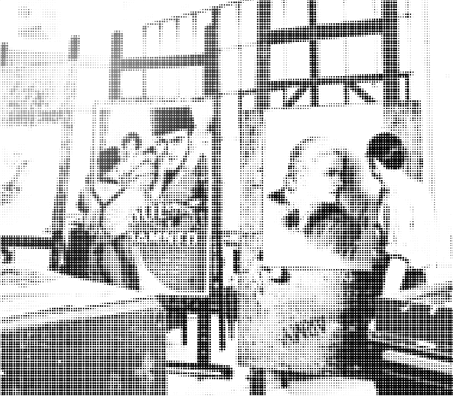



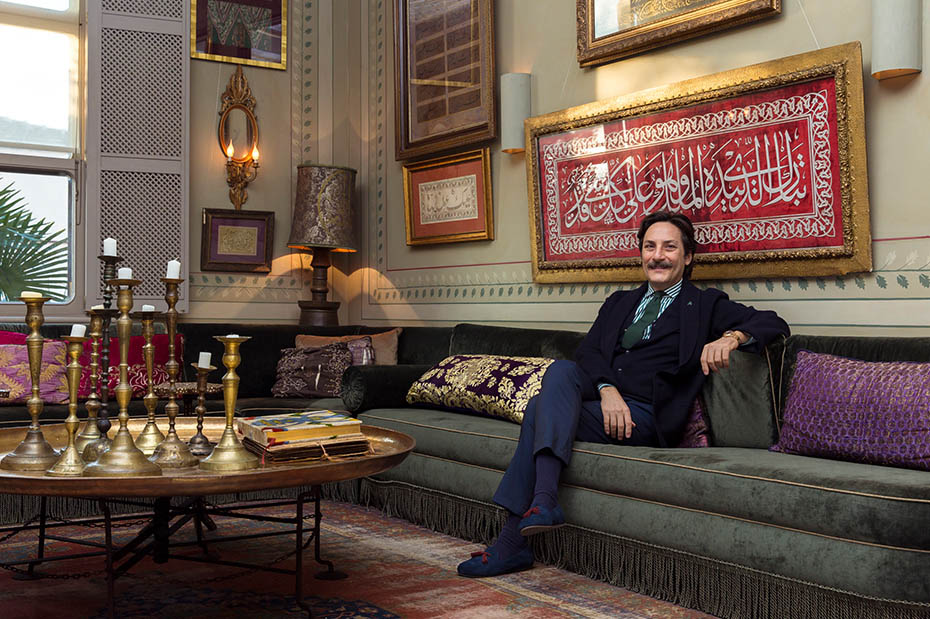
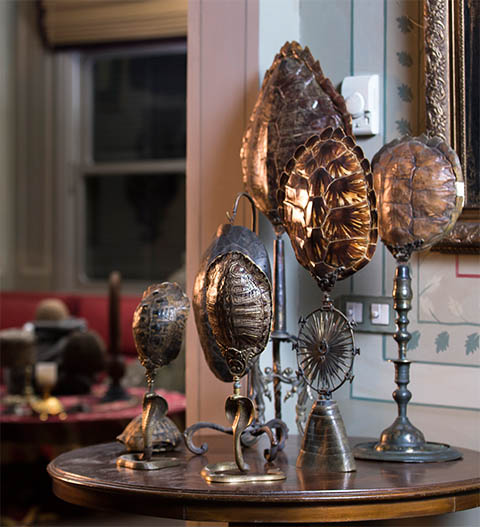
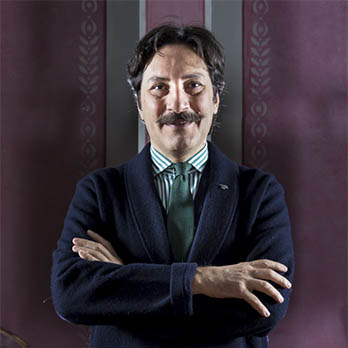

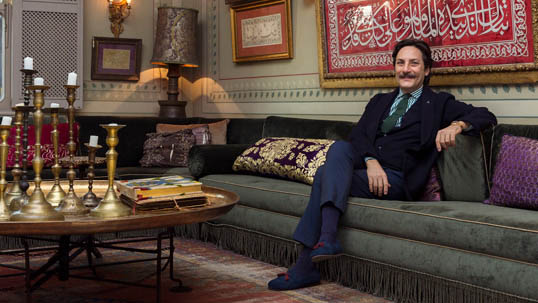
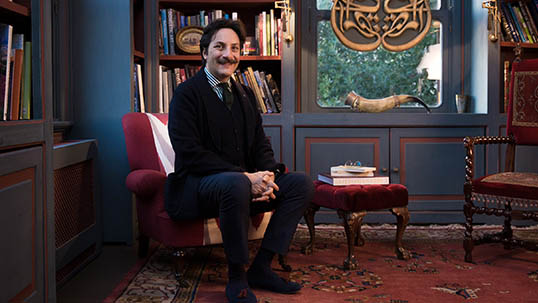
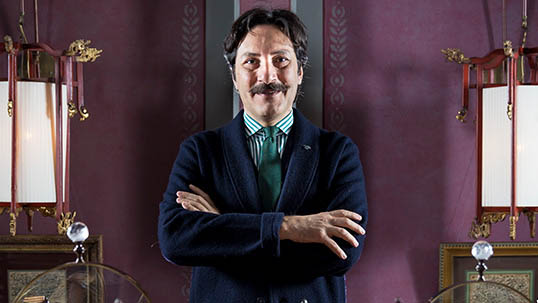
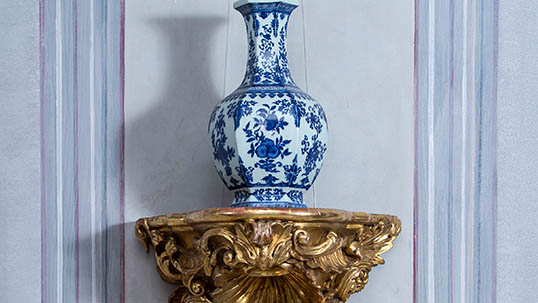
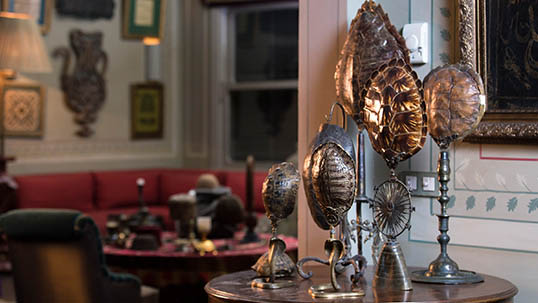
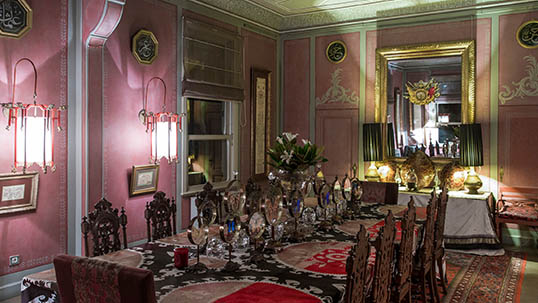
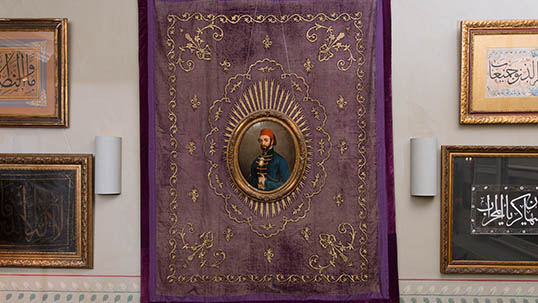





 UP
UP


